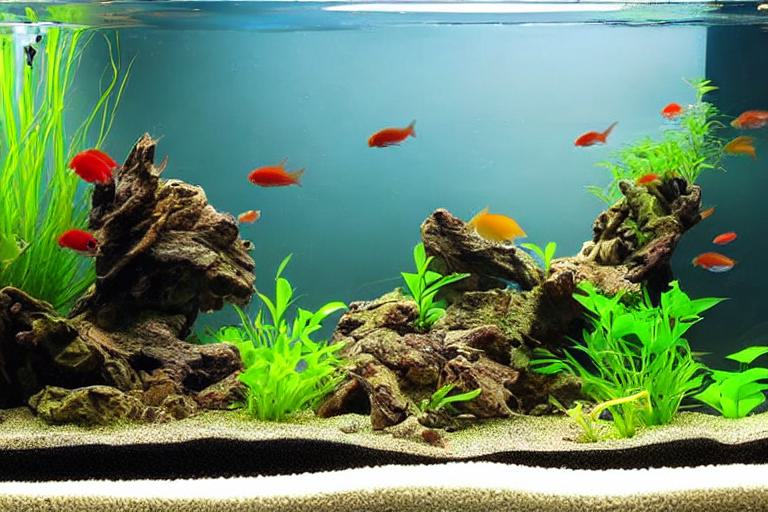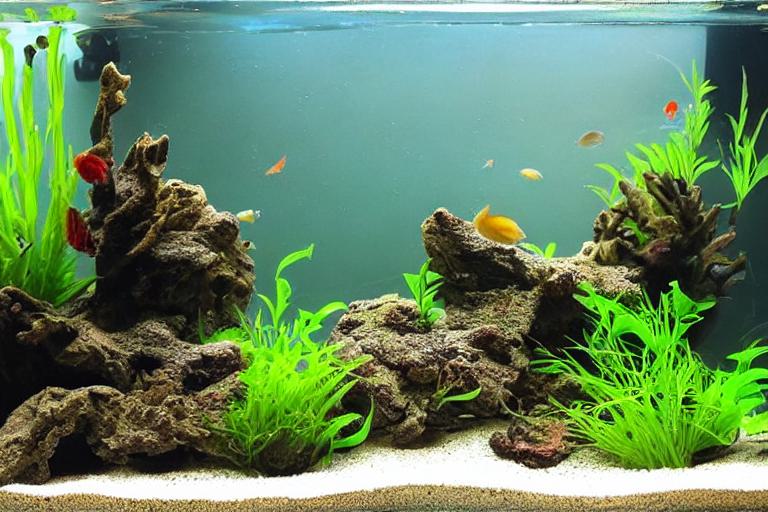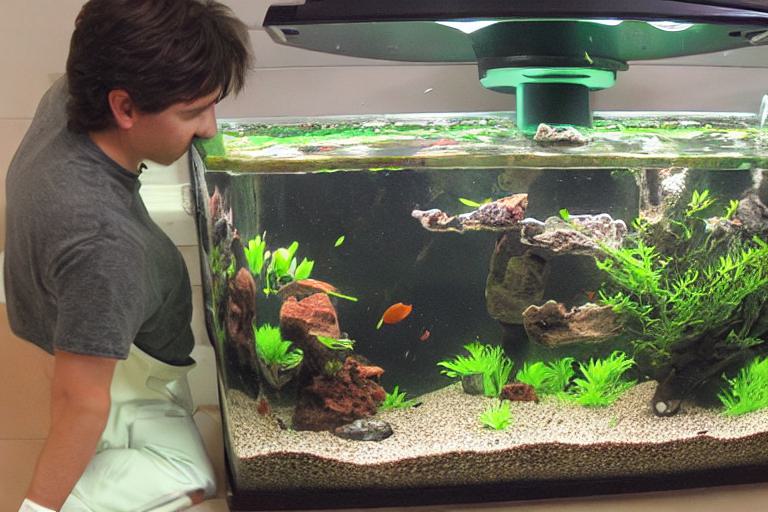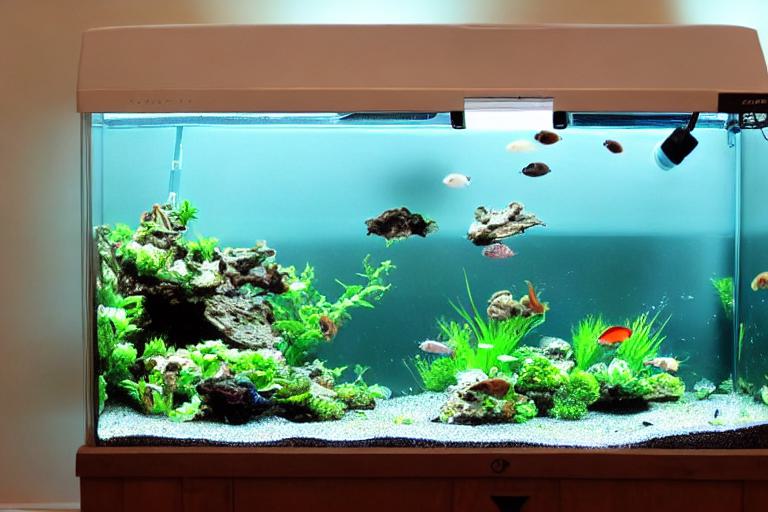If you’ve just gotten an aquarium, congratulations! Having an aquarium can be a very rewarding experience. But, before you can sit back and enjoy your new pet, you need to learn how to clean it properly. This beginner’s guide will teach you everything you need to know about cleaning your aquarium.
Step 1: Prepare your aquarium for cleaning
If you’re new to the aquarium world, the thought of cleaning your tank may be daunting. With a little bit of preparation, cleaning your aquarium can be a breeze. But don’t worry!
Here are a few tips to get you started:
First, remove all of the fish from your tank. This can be done by using a fish net to transfer them to a temporary holding tank or bowl. 1.
Next, remove all of the decorations and gravel from your aquarium. These can be set aside in a separate bowl or container. 2.
3. Once your tank is empty, it’s time to start cleaning! Use a sponge or soft cloth to wipe down the inside of the tank, being careful not to scratch the glass.
To clean the gravel and decorations, simply rinse them off with clean water. 4.
5. Be sure to rinse off your hands before adding the fish back into the aquarium. Once everything is clean, it’s time to put everything back in the tank.
By following these simple steps, you’ll have a sparkling clean tank in no time! With a little bit of preparation, cleaning your aquarium can be a quick and easy process.

Step 2: Get the tools you need
Here’s a quick rundown of the basics: If you’re new to the aquarium world, you might be wondering what kind of tools you need in order to clean your tank properly.
First, you’ll need a good quality aquarium vacuum. This will help you remove all the dirt and debris from the gravel and bottom of the tank.
Next, you’ll need a algae scraper to get rid of any unwanted algae growth.
Finally, you’ll need a good fish net to help you catch and move fish around during the cleaning process.
With these basic tools, you’ll be well on your way to keeping your aquarium clean and healthy!
Step 3: Remove some of the aquarium water
This will help to remove any build-up of toxins and waste in the water. Use a siphon to remove about 20-25% of the water from your aquarium. Be sure to dispose of the water properly. It’s important to remove some of the aquarium water when cleaning it properly.
Step 4: Get rid of algae
There are a few different methods that can be used to remove algae, and the best method will depend on the type of algae that is present. Algae can be a nuisance in an aquarium, but it is relatively easy to get rid of.
Another method is to use an algae eater, such as a pleco. One common method for removing algae is to physically remove it from the tank. This method is effective, but it can take some time to see results. This can be done with a brush or a piece of cloth.
There are a number of different products available that will kill algae. If the algae is particularly stubborn, it may be necessary to use chemicals to remove it. Be sure to follow the directions carefully, as some of these products can be harmful to fish if used improperly.

Step 5: Wash off your decoration
Next, use a net to remove any large debris from the decoration. Finally, rinse the decoration with clean water and allow it to air dry before placing it back in your aquarium. To remove your aquarium decoration, start by unplugging your aquarium filter and powerhead.
Step 6: Clean out your filter
Depending on the type of filter you have, you may need to do this every week or every month. If your aquarium has a filter, it’s important to clean it out regularly.
To clean your filter, first remove it from the aquarium. If your filter has a lot of dirt and grime build-up, you may need to soak it in a vinegar solution for a few hours before rinsing it off. Then, rinse it off in some clean water.
Your aquarium will now have clean, filtered water. Once your filter is clean, put it back in the aquarium and turn it on.

Step 7: Put water back into the tank
You’ll want to use a hose or a bucket to slowly add water to the tank, being careful not to disturb the gravel too much. After the dechlorinator has been added, you can finish filling up the tank. After you’ve scrubbed the inside of the tank and all of the decorations, it’s time to start putting water back into the tank. Dechlorinator is a chemical that removes chlorine from the water, and it’s important to use it when adding new water to your tank. Once the tank is about half full, you can start adding your dechlorinator to the water.
Freshwater aquarium water preparation
Aquariums are a beautiful addition to any home, and with the right care, they can be a low-maintenance pet. Part of keeping your aquarium healthy is making sure the water is clean and free of harmful chemicals.
One method is to let the water sit out for 24 hours before adding it to the tank. This allows the chlorine to evaporate and makes the water safe for your fish. There are a few different ways to prepare freshwater for your aquarium.
Another option is to use a water conditioner, which can be found at most pet stores. Water conditioners remove chlorine and other chemicals from the water, making it safe for your fish.
This is the most expensive option, but it will remove all impurities from the water, making it safe for your fish. Finally, you can also use reverse osmosis to filter your water.
No matter which method you choose, be sure to use clean, fresh water to keep your fish happy and healthy.
Saltwater aquarium water preparation
Aquariums are a beautiful addition to any home, and with the right care, they can be a low-maintenance way to enjoy the beauty of marine life. One of the most important aspects of caring for an aquarium is maintaining the quality of the water.
The first step is to purchase a high-quality salt mix. Saltwater aquariums require special care when it comes to water preparation. This mix will provide the necessary minerals and elements for your fish and other aquatic life.
You can use a water filter to remove impurities, or you can purchase distilled water. Next, you’ll need to fill your aquarium with fresh, clean water.
Once your aquarium is filled with fresh water, you’ll need to add the salt mix. Be sure to follow the instructions on the package, as too much or too little salt can be harmful to your fish.
After the salt has been added, you’ll need to let the aquarium cycle for a few weeks. This process allows beneficial bacteria to grow, which will help to break down waste and keep the water clean.
With proper care, your saltwater aquarium will provide you with years of enjoyment. Once the aquarium has cycled, you can add your fish and other aquatic life.
Step 8: Monitor the aquarium
You should also test the pH levels and make sure they are within the proper range. After you have completed all the previous steps, it is now time to monitor the aquarium. This means making sure the filter is running properly, the water quality is good, and the fish are healthy. This will help you keep track of the ammonia, nitrite, and nitrate levels in the water. The best way to do this is to invest in a water quality test kit.
This may mean changing the water, cleaning the filter, or adding chemicals to the water. If you notice any problems with the water quality or the fish, make sure to take corrective action immediately. Always consult a professional if you are unsure of what to do. By monitoring the aquarium regularly, you can prevent problems before they start and keep your fish healthy and happy.

Step 9: Clean the outside of the aquarium
It is important to clean the outside of the aquarium on a regular basis to maintain a clear view. Algae and other debris can accumulate on the glass, making it difficult to see into the tank. Aquariums can get dirty on the outside just as easily as on the inside.
To clean the outside of the aquarium, start by removing any decorations or rocks that are in the way. Be sure to rinse the glass well after scraping to remove any residue. Next, use a soft cloth or sponge to wipe down the glass, being careful not to scratch it. If there is stubborn algae build-up, you can use a scraper to remove it.
Once the glass is clean, you can replace any decorations or rocks that you removed. Finally, give the outside of the aquarium a good rinse with clean water to remove any soap or cleaning chemicals. Then, use a clean cloth to wipe down the aquarium stand or any other surfaces that may have gotten dirty.
Frequently Asked Questions
1. What are the basic steps of cleaning an aquarium?
To clean an aquarium properly, you will need to remove the fish and plants, empty the water, clean the gravel, and rinse the tank.
2. How often should I clean my aquarium?
It is typically recommended to clean an aquarium every two to four weeks.
3. How do I remove the fish and plants from my aquarium?
To remove the fish and plants from your aquarium, you will need to use a net. First, remove the fish from the water and place them in a temporary holding container. Next, remove the plants from the water and place them in a separate temporary holding container.
4. How do I empty the water from my aquarium?
To empty the water from your aquarium, you will need to use a siphon. First, place the siphon in the aquarium and start the flow of water. Next, direct the flow of water into a bucket or other container.
5. How do I clean the gravel in my aquarium?
To clean the gravel in your aquarium, you will need to use a gravel vacuum. First, place the gravel vacuum in the aquarium and start the flow of water. Next, direct the flow of water into a bucket or other container.
6. How do I rinse the tank after cleaning it?
To rinse the tank after cleaning it, you will need to use clean, fresh water. First, fill the tank with clean, fresh water. Next, use a clean, soft cloth to wipe down the inside of the tank. Finally, drain the water from the tank.
Final thoughts
Aquariums can be a beautiful addition to any home, but they also require a bit of work to keep them clean. By following the tips in this guide, you can easily keep your aquarium clean and healthy for your fish. Remember to clean the gravel and filter regularly, and to do a partial water change every week. With a little bit of effort, you can keep your aquarium looking great.
